
Do you find yourself gaining a couple of pounds, only to lose it a month later? Well then, you wouldn’t be the only one! Long-term weight retaining is a major obstacle for most underweight individuals.
Keeping aside genetics, the major factors that influence body weight are nutrition, nutrient absorption, hormones, metabolism, and rest. Thankfully, yoga can help you support almost all these aspects. The right routine of yoga, supervised by an experienced instructor will help you achieve a steady Weight gain.
Weight management is integrally tied with our habits, behaviors, and lifestyle. This is precisely where yoga excels over most exercises when it comes to weight gain. The beauty of yoga is its holistic approach.
How effective is Yoga for Weight Gain?
Consistent practice is one of the most important steps to gain weight through yoga. However, yoga does not directly help gain more body mass but contributes to various factors including improving metabolism, appetite, and digestive system which will, as a consequence, help you gain weight.
It’s found in a 2005 study, regular yoga practice was associated with attenuated weight gain, most strongly among individuals who were overweight.
However, it’s also a fact is that yoga is associated with less gain weight over time. It means, after sometimes when you come to the normal BMI range, your body doesn’t add further mass. It makes yoga a holistic approach to maintain optimum weight.
- Yoga establishes mindful eating that helps you maintain the right BMI. Researches show that at least 70% of the people practicing yoga stay within the normal BMI range
Yoga influences weight gain parameters
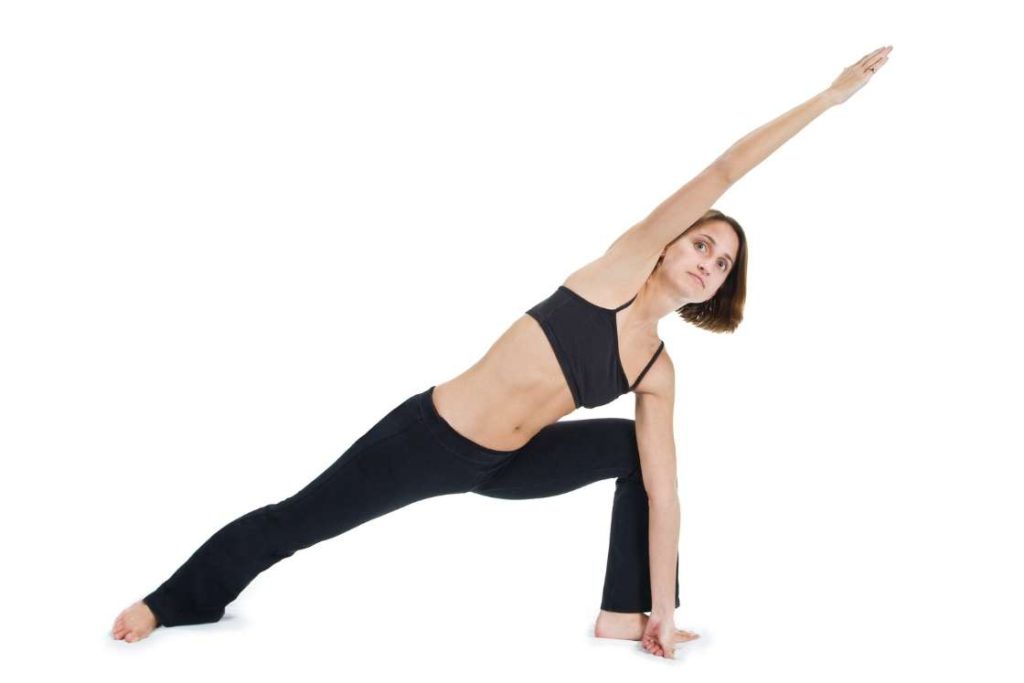
When you put yourself in a Yoga routine, you will be practicing different yoga poses that will specifically address certain weight gain determiners. For example, the Vajrasana helps improve digestion which in turn will enhance your nutrient absorption, and consequently, your weight gain. Similarly, different yoga poses will promote the well-being of different biological processes that lead to a steady and long-lasting weight gain.
The effect of yoga to gain weight can be understood by 4 parameters, Metabolism, hormone management, nutrient absorption, and relaxation.
1. Improves Metabolism
It is often found that underweight individuals have a high rate of metabolism. A high rate of metabolism spends more nutrients over little activity. Unfortunately, this leaves fewer nutrients available to build your weight.
Yoga has been empirically proven to establish an optimal rate of metabolism. An optimal rate eventually helps in efficient nutrients management.
2. Regulates essential hormone secretion
Yoga has shown significant results in gaining weight regulation of hormones. Yoga essentially influences the stress hormones, growth and reproductive hormones, digestion aiding hormones and thyroid hormones. These better-regulated hormones, collectively, increase the growth and mass gain of your body.
3. Enhance nutrient Absorption
The fundamental biological units that lead to Weight gain, are the nutrients. You might eat as much as you want, but unless your body can break it down to the simplest nutrient form, it can’t be put to use for weight gain.
Yoga helps the stomach and the small intestine to be more efficient in breaking down the food and absorption of nutrients. Further, Yoga triggers an appropriate blood circulation, blood that picks up the nutrients and carries them to different body parts and muscles. This entire process of generating and transporting nutrients throughout your body is pivotal to your weight gain.
4. Promotes relaxation
It is often said that relaxation is as important to mass gain, as nutrition and workout. It is the rest period that our body uses to repair our muscles and even build new ones. Yoga rids our body of stress, anxiety, insomnia, and depression for a sound sleep. Further, simple resting yogas can help our muscles relax and heal.
Yoga Asanas for Weight Gain
If you want to gain weight with yoga, you have to consistently follow yoga poses and dietary regulations. Once yoga becomes your regular routine-like activity, you will naturally start following a healthy lifestyle that can help you gain desired weight quickly.
Practice these 6 effective yoga asanas for weight gain;
Also read: 3 Yoga Mudras for weight gain easily
1. Supta Baddha Konasana (Reclining bound angle pose)
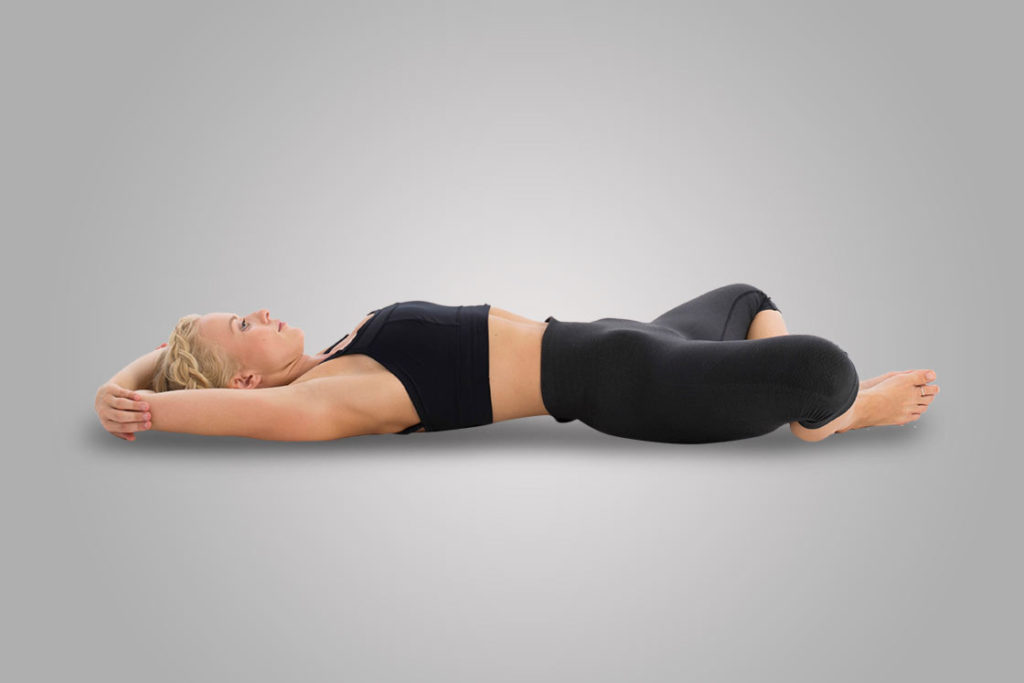
Supta Baddha Konasana is a very simple pose with extremely potent results. Needing you to mostly lie on your back, and make minor movements with your arms and legs -this pose is lovingly easy to perform.
This pose holds no chances of injury and can be performed by individuals with joint stiffness and pain. Apart from weight gain benefits, this pose also stimulates the urinary and ovarian system. It also releases tension in your groin and thigh region.
- Simply lie on your back. Relax your head, shoulders, back, hip, arms and legs. Let all of it rest on the floor.
- Extend your arms away from your body, with your palm facing the ceiling. Do not firm your hands or arms.
- Now gently bend your knees, and make a Namaste Posture with your feet by joint them.
- Draw your feet towards your groin -making a butterfly like formation. Do not touch your groin with your heel. Leave a foot gap between your heels and groin.
- You can relax in this step for around 5 minutes.
Caution: While resting with the feet drawn close, do try to forcibly open your groin and touch the floor with your knees. Let your knees stay above the floor by a few inches. Rather, put a cushion or blanket roll under your knees, and rest.
2. Vajrasana (Diamond pose)
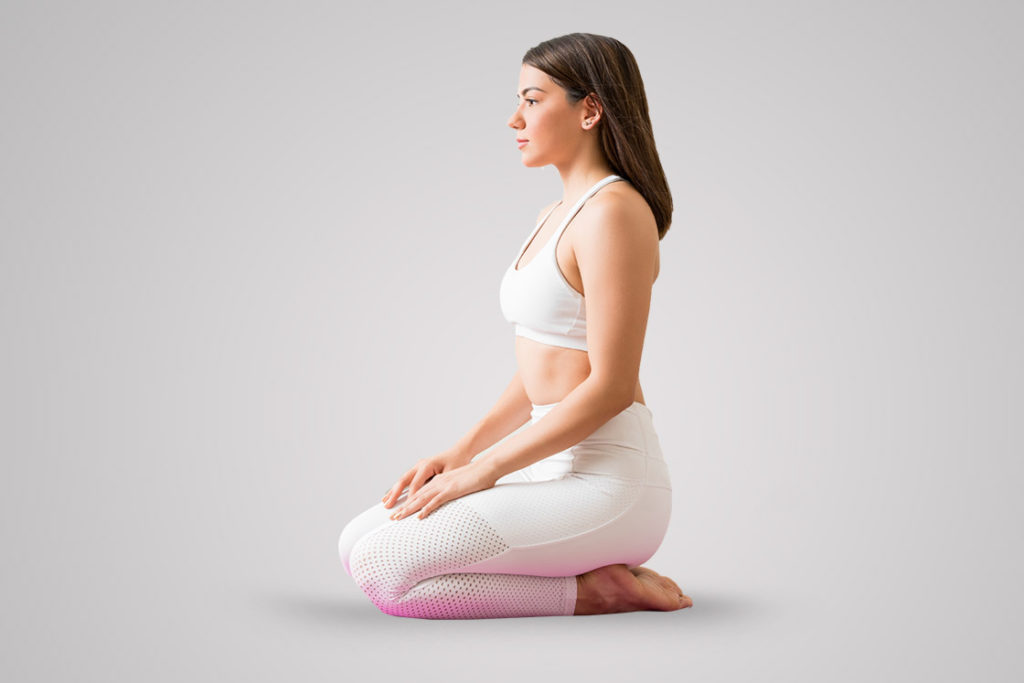
The diamond pose is an easy yoga asana that will benefit a weight gain routine. It helps your weight gain by aiding your digestive process when practiced post-meal. Vajrasana is a frontline yoga for maintaining your metabolism.
Vajrasana strongly influences your abdominal region, aiding digestion and relieving gas. Consequently, this yoga supports your bowel movements. It also flexes your thighs, knees, and ankles.
- Start by kneeling down on your knees. Bring your inner thighs close to each other -almost touching each other.
- Stretch out your feet, with the bottom facing up, towards the ceiling.
- Join your feet together -both your big toes and your heels.
- Lean forward and slowly sit on your heels. As you sit on your heels, and the heels take the pressure of your body weight, let your feet accordingly rest towards the floor on the outer sides of your feet. While your sitting bone is still resting on your heels.
- Hold this position initially for a minute, and gradually increase the duration as your heels and ankles get used to your body weight.
Caution: This pose has the potential to injure your knee or ankle. Thus as you start to sit, take the support of the floor with your hands. This will distribute your body weight between your knees and your hands. Then as you sit on your heels, put a thinly rolled towel under the top of your ankle -to protect your ankle.
3. Virabhadrasana 1 (Warrior pose I)
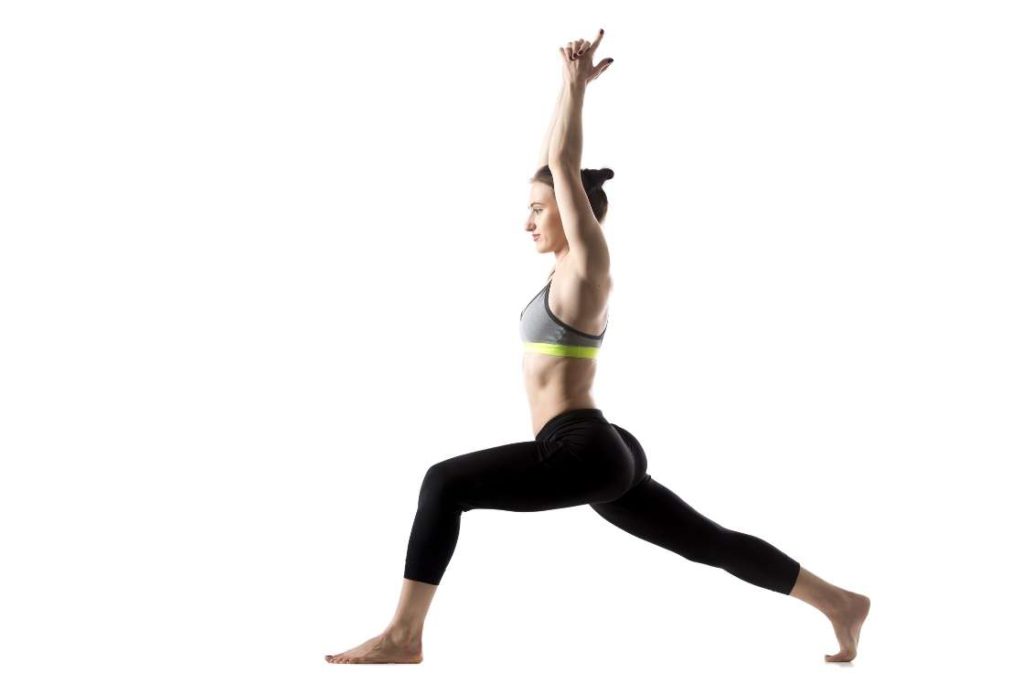
If you are looking to build muscles of the upper body or legs, Virabhadrasana can help you with this. The pose works on your thigh and calf muscles, leg joint ligaments, lower back, lower abdomen, chest, and shoulder blades. Working on most of your muscles, this asana is quite handy for weight gain. This asana can also work up a healthy appetite for you.
The warrior 1 pose is particularly designed to stretch out our entire musculoskeletal system and activate underutilized muscles throughout our body. Thus, this pose will bring therapeutic relief to many muscle-related injuries.
- Stand in mountain pose, with feet hip length wide. Increase the gap by a foot.
- Turn your left foot inside by 45 degrees and right foot by 90 degrees. Keep both your heels in the same line.
- Now as your feet turn, do not restrict your body, let it turn naturally as well. If you forcefully restrict, it will pull your thigh muscle from abnormal angles. Consequently, increasing your knee pain.
- Now lift your left heel and rotate the foot on your toe, so as to point it in the same direction as your right foot.
- Turn your upper body right, from your hip to match your feet.
- Keep your back and head straight and set your left heel down on the floor.
- Bend your right knee, and take your knee and upper body front. And stretch your left leg. Distribute your body weight equally on both legs.
- Finally, raise your up hands straight, and join them high on top of your head. Hold it for 15 seconds and then repeat the pose by reversing the leg roles.
Caution: In the beginning stages of practice, placing the left heel all the way to the ground can pull your calf muscle, hamstrings, or injure your ankle ligament. So, you can use a yoga block as a support lift under your left heel.
4. Matsyasana (fish pose)

Fish pose is one of those exercises that help you build and tone your muscles, as well as, bring benefits for your internal bodily organs. This asana will make your upper body flexible and reduce muscle rigidity. Soft and flexible muscles are always beneficial for muscle growth.
Additionally, the fish pose has a good influence on the thyroid hormone, responsible for weight management. Hyperthyroidism is often responsible for a high metabolism rate, which in turn causes underweight. Matsyasana maintains the optimal production of the thyroid and thus a balanced metabolism.
- Lie on your back with your hands by your side.
- Join your legs and thighs and keep them straight. Point your toes and press down your heels.
- Place both your hands under your hips, side by side.
- Press down your heels, hands and elbows and pull up your spine in an arch shape -whilst your head tilts back and touches the floor.
- Hold the pose for 5-10 breaths and gently release.
Caution: For beginners the pulling up and arching of the spine can be a bit tricky. Try not to haste, and keep the slow movement on the rise. A sudden jerk can cause an injury to the hip, spine, back, or shoulder. Allow the upper part of your lower back to rest on a yoga block during the hold. For better support, get a manual assist to press down your legs against the floor.
5. Bhujangasana (cobra pose)
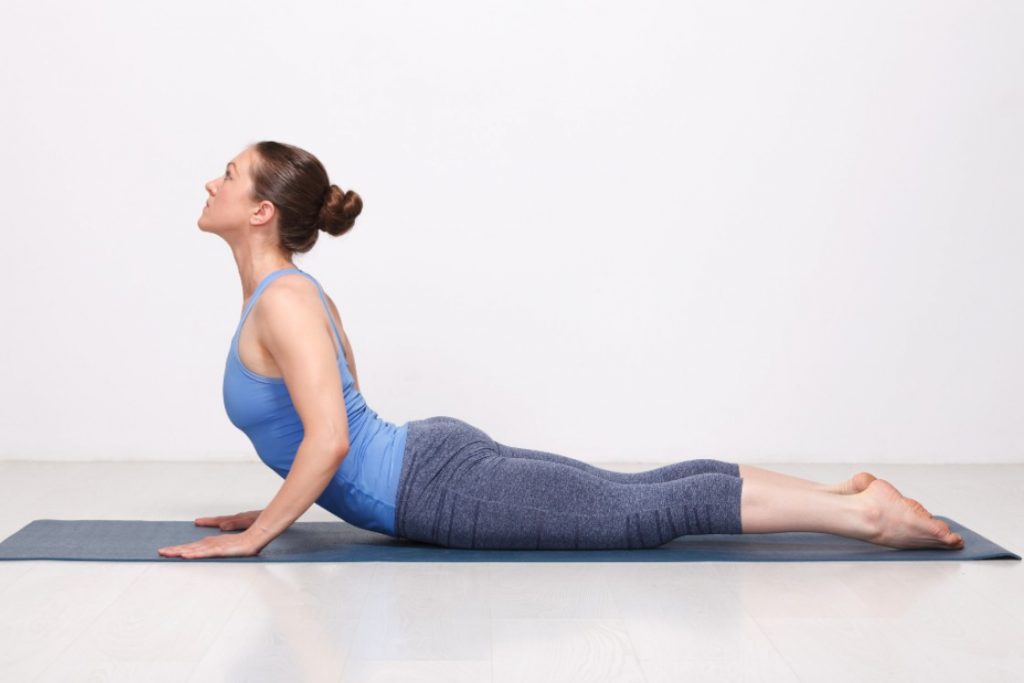
Cobra pose helps your weight gain by increasing your appetite, aiding your digestion and metabolism, and stimulating the adrenal hormones that help in growth and rest.
Cobra pose will be an essential inclusion to your weight gain routine. This pose will help you gain weight and give it shape as well. This pose requires a bit of practice to execute accuracy. This pose requires you to mainly arch your spine from torso to head, upwards while lying down on your front. The major challenge is that our lower back is generally more flexible than the upper part. Thus, as a beginner it is easy to over-stretch the lower back.
However, the key is to arch the entire spine evenly. This will require a good degree of body awareness and control, which will come with practice. Once you learn to use your abdominal muscle to gently guide the even arch of your spine, cobra pose will bring a whole range of weight gain benefits.
- Lie down on your front with your legs and thighs joined, and toes stretched.
- Bring your hands by the sides of your chest, in a pre push-up fashion.
- Now, press down your hands and slowly push up your upper body in a stretch, from your hips to your head. Remember to keep your thighs to toes stuck with the ground at all times.
- Make the arch as slowly and consciously as possible, and try to keep the arch as even as possible. Build up the tensions in your torso muscles, gradually extend it to the abdominal muscles and then to the chest muscles. Let this gradual movement of muscle tension in your front body, guide the arch of your spine.
- Hold the pose for 5-10 breaths.
Caution: This pose has a risk of injuring your spine. Do not try this pose in a single attempt, take it slow. You can take a manual assist to give you a slight lift on the arching, to save elbows and shoulders from initial stress, and let you focus better on the arching.
6. Savasana (corpse pose)
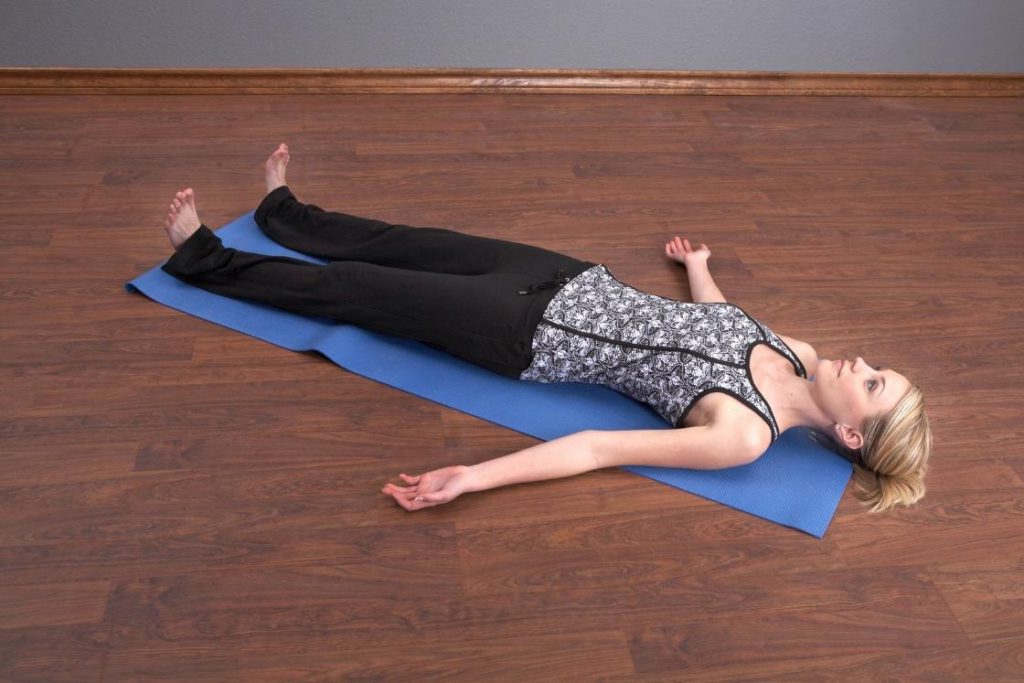
The corpse pose is the ultimate resting pose. Ideally, every yoga session can be concluded by this pose.
This meditative pose establishes harmony within your body by balancing many of your internal bodily systems. The Savasana has a balancing effect on your entire hormonal system. It’s surprising how paramount the benefits of such a simple exercise can be. If you really dive deep into the Savasana you reach unexplored dimensions of awareness and consciousness.
This asana can help enhance your nervous system, digestive system, organ and muscle healing, immunity system, anxiety management, blood circulation and more.
- The instructions on this yoga are pretty simple, however the execution can be quite difficult.
- You simply got to lie down on your back in a rested position.
- You can keep your hands by your side close to the body and legs hip length apart. Or, you can increase the gap between your legs by a foot and extend out your hands as well.
- And then you need to relax. Consciously focusing on every part of your body, every organ and every muscle. You need to relax all of it.
Caution: The problem with Savasana is that our mind is not completely in our control. Our subconscious mind stays in alert mode, keeping certain areas of our body tense. Even being aware of such areas can take years of practice, let alone focusing on relaxing those areas. Thus, this is an asana that holds no injury risk, but at the same time, there are no support systems available to complete this asana. At the best, you can play meditative music or binaural beats, but even then, practice will be your best help.




